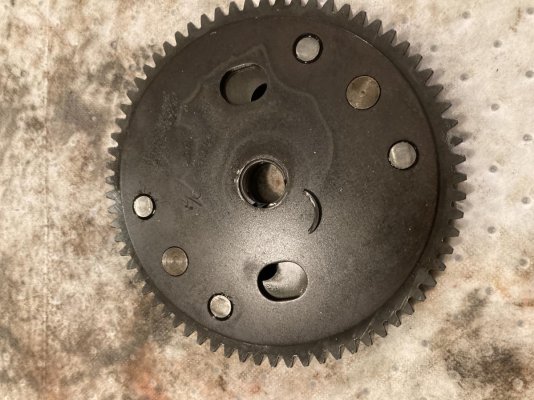Mischief Managed
Guru
- Joined
- Oct 24, 2018
- Messages
- 679
- Location
- USA
- Vessel Name
- Mischief Managed II
- Vessel Make
- 1992 Tollycraft 44 CPMY
I think one of mine is bad and am close to removing it (it's a bit of work). Anyone here ever dealt with a bad one? The engines runs OK but has more vibration than the other engine at low speeds and uses a bit more fuel. When it's idling, the V belts vibrate like crazy which I think is caused by the crankshaft speed varying in every revolution. Additionally, the tach sending unit (which is driven by the timing advance unit) sends out extra little electrical pulses that trick my Aetna tach into reading high. I can see the pulses on my oscilloscope. I swapped tachometers and sending units and the problem always follows the engine.
I think one of the springs in the timing advance unit is fractured and it's advancing at too low of an RPM.
Your thoughts?
I think one of the springs in the timing advance unit is fractured and it's advancing at too low of an RPM.
Your thoughts?

